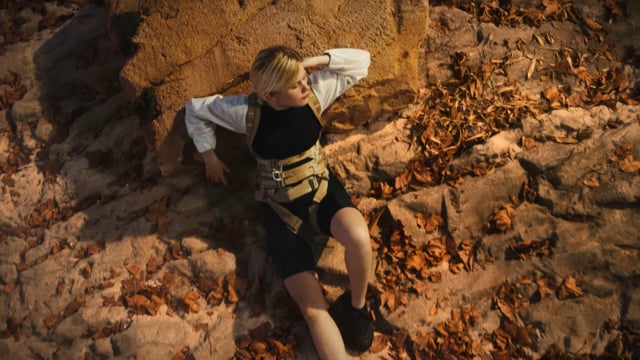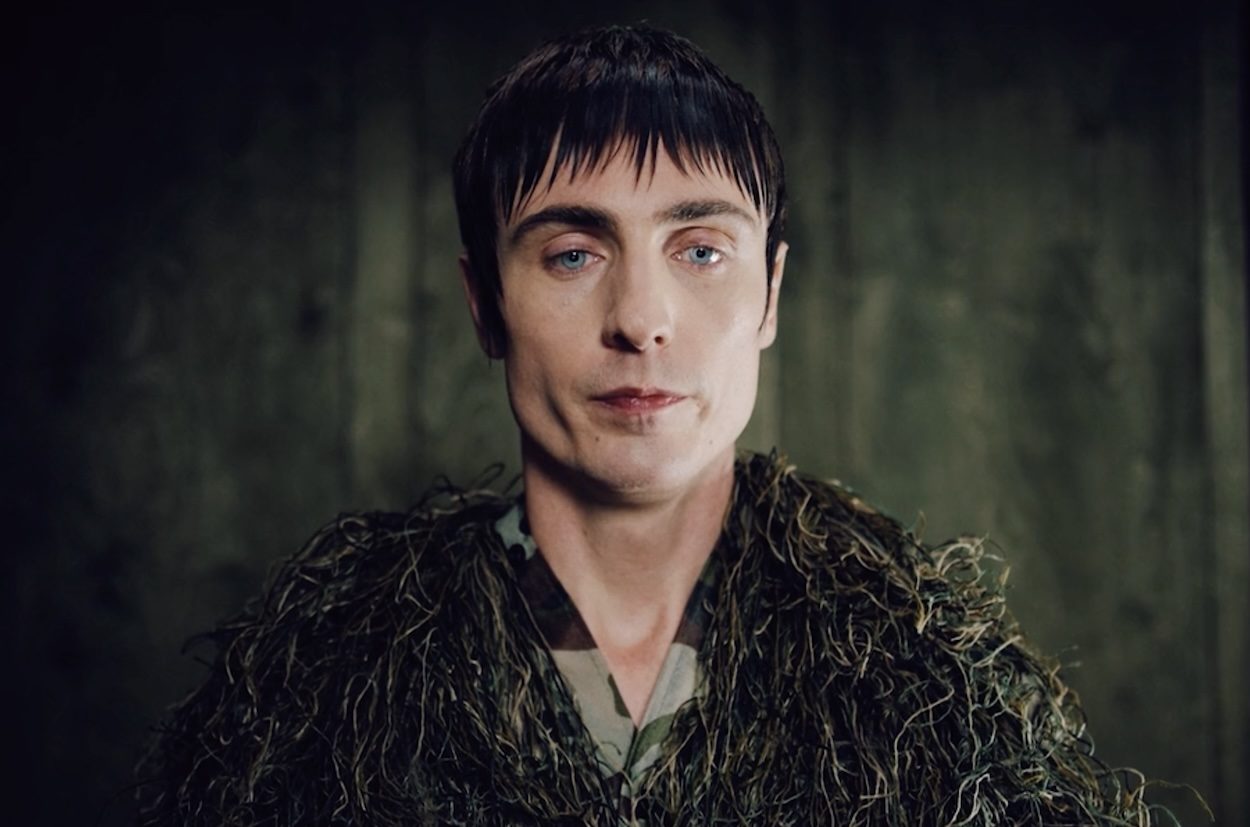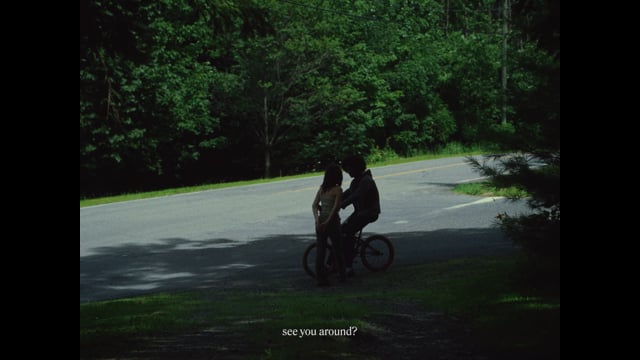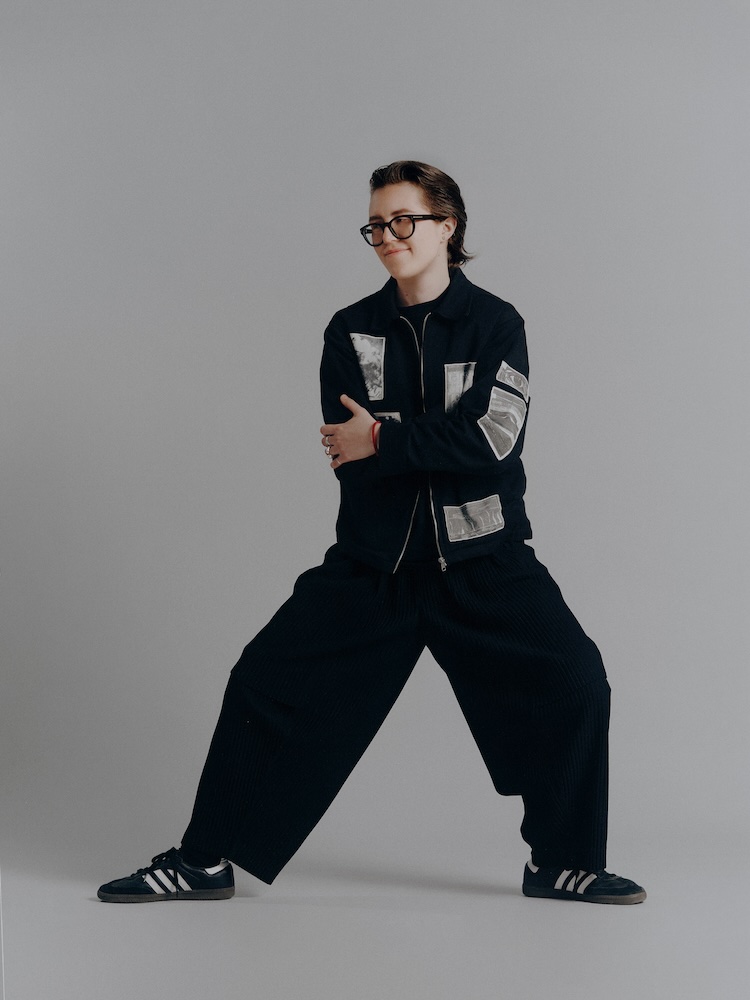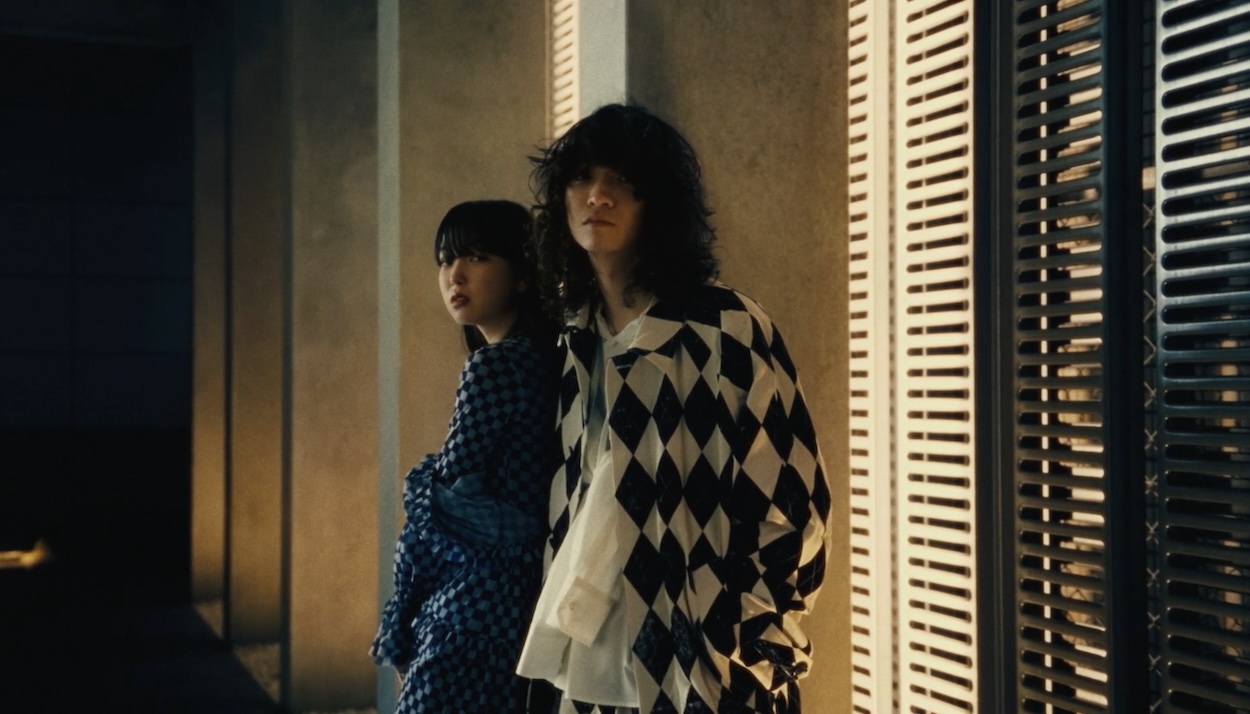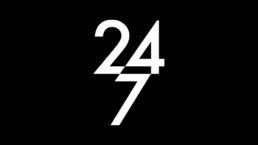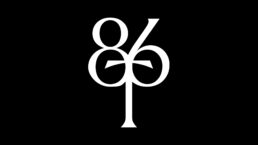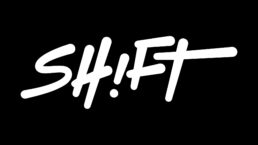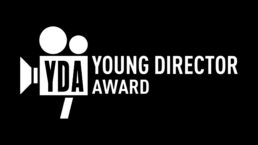Bobby Leon
Did you grow up in a creative environment? When did you realise that directing was on the cards for you?
I grew up in Montreal in an environment where creativity and curiosity were encouraged as my family works in industries adjacent to creative fields, so culture, music, films, and technologies were a part of our daily conversations. My uncle was (and still is) a really important figure for me; he encouraged me to learn photography more seriously, challenged me, and taught me how to do proper research and find answers to any question I had; it was very empowering when I was young. From there I organically made my way into video, teaching myself how to film, edit, do colour etc. on my own, shooting constantly and gradually gaining confidence and a clearer vision.
Tell us about the experience of shooting in Osaka for Whispering Smiles. Did the city itself inspire you?
Andrea Peña, our movement director, and I have travelled a lot through touring with her company and Japan had been a dream of ours for a really long time. When we visited Osaka, we knew we wanted to shoot a creative project there. Something that struck me the first day in Japan was how the light reflecting on the water and the quietness made all the anime I watched as a kid make sense. I’ll never forget that moment. It felt so true, and a physical actualization of what marked my youth. What a way to start! It was most certainly inspiring; it compels you to really take your time to take in every detail, no matter how insignificant it may seem. It’s probably from this enhanced observational state that we led the project. The locations in the film are parking lots, and an apartment complex’s entrance. We just followed the light. The soundscore is also all recordings I took on my phone during our trip that I edited together. The final touch was the voice over recording; the whisper invites you to tune in and creates instant intimacy. It goes well with the pace of the film.
The costume design for your two protagonists is carefully connected while each of them are distinct. How did the styling choices come about when developing these characters?
When we met Yoshi and Shiori, they were wearing these exact outfits. They frequently wear pieces from the shop they work at (Palette), and it felt like they coordinated their looks that day. In a way, this short film is a semi-poetic documentary. They were on camera as they were in real life, observant and cheeky with an amazing sense of style. I think about that black-and-white suit often.
Whispering Smiles
Does your still photography feed into your directing style? How did this manifest in Whispering Smiles?
Portraiture has greatly influenced my approach, as has the dance world. I’ve been filming and photographing dancers in the studio for years; it was my second home. Being in that environment taught me about leadership and sharing vulnerable space with people; it taught me to partner with them and enter a bubble space where we can exchange energy and respect with each other. Being aware of my own “humanness” and that of others, allows people to let their guard down around me. I’m curious about taking on wider directorial roles, maybe for scenic design, live shows etc.
Andrea and I have been creative collaborators for over 10 years, shooting many dance films side-by-side; our brains communicate without needing words and we finish each other’s sentences and ideas organically. With Andrea, it’s always about crafting the right space to allow people to feel comfortable exploring movement in a way that is novel for them but also empowering. For this particular project, it was all about stretching time and feeling comfortable in it – when they smiled at the end, it was all genuine.
How did Dahlia Bertoldi’s poem fit into the process of making the film?
The poem came really after the edit was finalised. For my creative projects, I tend to work backward. Or maybe it’s not backward but simply how I’ve come to develop my practice through being immersed in the dance world. Everything starts with the body and the present moment, the exchange between people. And the words are born from those instances. I like going script-free, there’s a certain honesty I find in it. Something purely creative gets channeled, and then the words fall perfectly into place. Dahlia and I met in London in September and quickly became friends, and I was very touched and grateful when she then shared her poetry with me. The next day I sent her the edit of the film, with context about the direction, and she took the invitation. She sent me a note with her writing and I fell in love with it, kept it intact and recorded myself whispering it. Collaboration is magic.
Mr Munro
How does your love of improvisation affect how you approach a project in pre-production?
In portraiture and capturing dance, I really enjoy having the space to let certain moments unfold, but it alway depends on the team and the project’s stakes. There’s an overarching structure with pockets of playtime. Storyboards are important, yet I also believe in the present moment and things that you couldn’t have planned. That’s where things come to life for me, and the excitement of synchronicity becomes palpable. For La Symphonie des Éclairs, for example, storyboarding was paramount because the VFX team needed to know exactly how the project would unfold and the technical logistics, along with how to shoot the artist in the virtual environment. Timings had to be respected and storyboarding kept us all on the same page. Contrastingly, there were no storyboards for Mr. Munro, only costumes, a great location, and exploration; the story was born from those moments and the structure of the poem.
In Mr. Munro, you have a fascination with exploring the uncanny-canny. Where did this fascination, and this character, come from?
I really enjoy watching characters in films that emanate an uncanniness or behaviours that are surprising to the audience. When done well, it makes us have empathy for them, even if we find them repulsive or too odd for our liking. It’s a door for people to accept or become familiar with the unfamiliar. I approached each look like a chapter of the character. With Christopher, we improvised movement sequences that felt really odd to repeat, all while keeping a stoic expression. So the character was born out of movement and allure. I was instantly inspired by Les Triplettes de Belleville, Patrick Bateman, and Jean-Baptiste Grenouille.
La Symphonie des Éclairs
Having used a poem by ChatGPT as the base for your piece Mr. Munro, and using Unreal Engine for La Symphonie des Éclairs, you’re clearly not afraid of using cutting-edge tech in your work. How do you envision the industry changing with the growth of AI, and how do you think that will affect your role as a director?
My favourite toys when I was a kid were Bionicles and Transformers, I’m very very curious about new technologies – I’m not afraid of looking at something I know nothing about and teaching myself how to make it work. For Mr. Munro, the poem generated by ChatGPT was a good structural base for the editing of the piece but it was empty of life, and lacked a sensible thought process beyond mere rhyming. When the time came to craft an actual story, I went to Juliette Garcia to write the actual poem we used and in the end, we scratched the entire ChatGPT poem and worked solely with Juliette’s work. The process sounds backwards and Frankenstein-y but it was a really interesting chance to allow ourselves to play and explore, which was the goal at the end of the day.
Technologies are tools, and what matters are the intentions behind why and how we use them. We can create a lot of hype around a project because of a specific technique, but is it actually helping the story develop? If it does, it doubles the gratification because it’s aligned with purpose. This is unprecedented technology, and with all the excitement and anxiety looming around it, I believe we need a sober approach to it. I love this circulating meme, “Can AI help clean the ocean or just take away screenwriting jobs?” and I think it’s true. There’s nothing like human experience translated into transcendent moments on screen.
What are you working on at the moment?
Currently, I’m working on visuals for the stage for two music artists and one dance piece by Andrea Peña & Artists called Uaque, in collaboration with Edward Burtynksy’s images, Alexander Shelley and the NAC’s orchestra (show is in September).
I have recently soft-launched the project Massive Joy, a website that archives creative projects made for the sole purpose of joy, to encourage creatives to bring joy back into their practice. I wanted to build a space for that type of work outside of Instagram. Eventually there will be screenings and meet-ups to bring a more tangible aspect to it.
Interview by Becca Nichols
INFO:
@_bobbyleon

